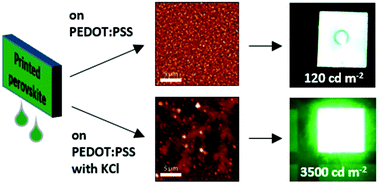(Flexible and recyclable optoelectronics move a step closer)
2020/6/10 オーストラリア連邦・オーストラリア連邦研究会議(ARC)

・ ARC センター・オブ・エクセレンス(CoE) in Exciton Science(励起子科学)とクィーンズランド大学が、誘電体/金属/誘電体(D/M./D)の三層より構成される、フレキシブルでリサイクル可能なナノメッシュ電極を開発。
・ 本研究は、フレキシビリティやリサイクルの可能性等の新機能を備えた透明薄膜設計の開発に影響を与え、環境に優しい次世代のオプトエレクトロニクスの優れたプラットフォームを提供するものと考える。
・ 同ナノメッシュ電極は、薄膜太陽電池やスマートフォンのディスプレイに不可欠なコンポーネントである酸化インジウムスズ(ITO)材料を使用した透明薄膜電極を代替する可能性が期待できる。ITO では、原料の希少性により価格が上昇していることに加え、元来の脆さにより機能が制限される。
・ 同ナノメッシュ電極は 90%を上回る透過率を有し、ITO に匹敵する高い導電性を提供。商用アプリケーションを見据えたロール・ツー・ロールプリンティングへの導入が可能と考える。
・ より安価で高効率な太陽電池やスマートフォンのタッチスクリーンの実現だけでなく、電気で色を変えるエレクトロクロミズムによるスマートウィンドウでの使用では、家庭の電気使用量の長期的な節約にも貢献可能。特定のフレキシブルなエレクトロクロミックアプリケーションでの利用では、リサイクルの可能性も提示。
・ 自由に組み合わせた材料をナノスケールパターンに蒸着する積層技術のナノスフィア・リソグラフィーを用いて作製した同ナノメッシュ電極では、精確に制御された孔サイズとワイヤ幅および均一な孔配置により、高い透過性、電力損失を最小限に抑える低い表面抵抗率、そして極めて優れた耐屈曲性を実現。
・ ナノメッシュシステムに D/M/D 構造を取り入れることで、金属性ナノメッシュの影の部分に高い透過性を付与。D/M/D 構造のナノメッシュの透過性フィルムの研究は今回が初めて。シンプルでコスト効果的なナノスフィア・リソグラフィー技術を用いて、多様な層状ナノメッシュ材料が作製できる。
・ 今後は、今回の研究結果の商業的な実現可能性を踏まえた長期的な展望と共に、そのスケールアップについて検証する。
URL: https://excitonscience.com/news/flexible-and-recyclable-optoelectronics-move-stepcloser
<NEDO海外技術情報より>
(関連情報)
Advanced Functional Materials 掲載論文(アブストラクトのみ:全文は有料)
Trilayer Nanomesh Films with Tunable Wettability as Highly Transparent, Flexible, and Recyclable
Electrodes
URL: https://onlinelibrary.wiley.com/doi/abs/10.1002/adfm.202002556
Abstract
Metallic mesh materials are promising candidates to replace traditional transparent conductive oxides such as indium tin oxide (ITO) that is restricted by the limited indium resource and its brittle nature. The challenge of metal based transparent conductive networks is to achieve high transmittance, low sheet resistance, and small perforation size simultaneously, all of which significantly relate to device performances in optoelectronics. In this work, trilayer dielectric/metal/dielectric (D/M/D) nanomesh electrodes are reported with precisely controlled perforation size, wire width, and uniform hole distribution employing the nanosphere lithography technique. TiO2/Au/TiO2 nanomesh films with small hole diameter (≤700 nm) and low thickness (≤50 nm) are shown to yield high transmittance (>90%), low sheet resistance (≤70 Ω sq−1), as well as outstanding flexural endurance and feasibility for large area patterning. Further, by tuning the surface wettability, these films are applied as easily recyclable flexible electrodes for electrochromic devices. The simple and cost‐effective fabrication of diverse D/M/D nanomesh transparent conductive films with tunable optoelectronic properties paves a way for the design and realization of specialized transparent electrodes in optoelectronics.



